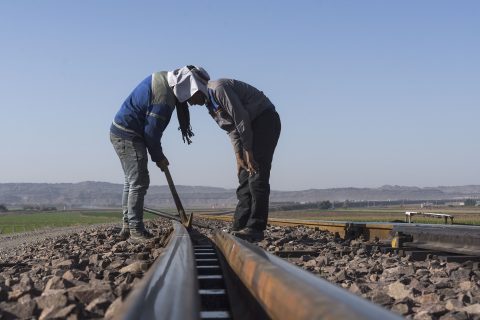Baku declaration hints at much-needed investment in INSTC

A trilateral statement signed between Russia, Azerbaijan and Iran could be the starting point to fill the railway infrastructure gaps along the International North-South Transport Corridor (INSTC). The Baku statement, as the three partners call it, will probably seal the construction of the Rasht-Astara railway line in Iran.
The significance of the Rasht-Astara line for Iran and the INSTC is well known. In early September, Kheirollah Khademi, head of the Construction and Development of Transportation Infrastructure Company of Iran, made clear his government’s intentions to push for external investments in the railway line. Specifically, he said that the line’s completion would be feasible only with Russia’s financial support, which could benefit both countries.
It now seems that what was Iran’s wish has become Russia’s goal. At least, that is what the Baku statement claims: “the readiness to cooperate in the assessment and analysis of infrastructure and transport capabilities to use the full potential of the corridor and set a target of bringing the volume of cargo transit to 30 million tons by 2030”.
Preparations before the year ends
According to Russian Deputy Prime Minister Alexander Novak, who also signed the joint statement, the three partners will commence preparations to “draft an agreement on the Rasht-Astara railway project within a month and begin negotiations before late 2022”.
He also mentioned in Azerbaijani media that “among the primary objectives of the Russian side will be the construction of the Rasht-Astara railway section. This railway will ensure the growth of the cargo flow along the western section of the INSTC by up to 15 million tons,” he explained.
At the same time, a spokesman of the Iranian government highlighted that “Iran, Azerbaijan and Russia have agreed on accelerating the construction of the Rasht-Astara railway line within the International North-South Transport Corridor”. Of course, the line’s completion is not expected in the following months. It could take a few years to complete, but then again, this is up to the partners and the urgency to unlock the route.
Also read:
You just read one of our premium articles free of charge
Want full access? Take advantage of our exclusive offer




